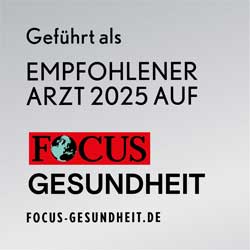 |
| |  |
ORTHODONTICS GLOSSARY A - Z
PARTS OF YOUR BRACES
Appliance - Any device used to influence the growth or position of teeth.
Arch wire - A metal wire which is attached to your brackets to move your teeth.
Band - A thin metal ring, usually stainless steel, which serves to secure orthodontic attachments to a tooth. The band is closely adapted to fit the contours of the tooth and is cemented into place.
Bracket - An orthodontic attachment secured to a tooth for the purpose of attaching an arch wire. (Brackets with an attached arch wire are parts that “make” the appliance or brace.)
Breakaway - A breakaway is a small plastic piece with an internal spring which is used to provide force on a facebow.
Buccal tube - A small metal part that is welded on the outside of a molar band. The buccal tube contains slots to hold archwires, lip bumpers, facebows and other things your orthodontist uses to move your teeth.
Chain - A stretchable plastic chain used to hold archwires into brackets and to move teeth.
Facebow or headgear - Facebows are wire apparatuses used to move your upper molars back in your mouth which creates room for crowded or protrusive anterior teeth. Generally, the facebow consists of two metal parts which have been attached together. The inner part is shaped like a horseshoe. This part goes in your mouth and is connected to your buccal tubes. The outer part has two curves. The curves go around your face, and connect to the breakaways or high pull headgear. To properly use the product, the inner bow needs to be inserted into your buccal tubes. An elastic neck band is placed around the back of the neck while the triangular cast offs on both sides of neck band are attached to the outer bow of the headgear. Completing the apparatus is a plastic safety strap that is placed over the neck band and onto the outer bow of the headgear.
Impression - A negative copy of a structure, such as a tooth or dental arch; usually made with an elastic compound for the purpose of making an exact positive replica in plaster.
Interceptive orthodontics - An extension of preventive orthodontics that may include minor local tooth movement in an otherwise normally developing dentition.
Ligating module - A small plastic piece, shaped like a donut, which is used to hold the arch wires in the brackets on your teeth.
Lip bumper - A device used to push the molars on your lower jaw back to create more space for other teeth. The lip bumper consists of an arch wire which is attached to a molded piece of plastic. You mount the arch wire in the buccal tubes on your lower jaw, and plastic piece rests against your lips. When you eat or talk, you push the plastic piece back which pushes your molars back.
Mouthguard - A device that is used to protect your mouth from injury when you are participating in sports. The use of a mouthguard is especially important for orthodontic patients to prevent injuries.
Neck pad - A cloth covered cushion which you wear around your neck when you put on your facebow. Generally, the breakaways are attached to the neckpad to provide force for the facebow.
Orthodontics - Also known as Dentofacial Orthopedics. The area of dentistry concerned with the supervision, guidance and correction of the dentofacial structures including those conditions that require movement of teeth.
overbite - Vertical overlapping of upper teeth over lower teeth.
palatal expander - A device used to make your upper jaw wider.
retainer - Any orthodontic appliance, fixed or removable, used to maintain teeth in corrected positions during the period of adaptation following corrective treatment.
retention - The passive treatment period following active orthodontic correction during which retaining appliances may be used.
safety strap - A plastic strap which prevents a facebow from coming loose and hurting you.
separator - A plastic or metal part which the orthodontist uses to create space between your teeth for bands.
underbite - Retrusion and protrusion of the lower jaw.
wax - A clear wax used to prevent your braces from irritating your lips when your braces are first put on.
THE ORTHODONTIST’S TOOLS
band remover - A special plier which the orthodontist uses to remove bands from your teeth.
bite stick - A device the orthodontist uses to help put on your bands. The orthodontist puts the band in place, then asks you to bite down on the bite stick to help push the band in place.
cephalometric viewer - An x-ray viewer.
cheek retractors - Small plastic pieces used to draw back your lips and cheeks so the orthodontist can more easily see your teeth and work in your mouth.
curing light - A special UV light used to help attach brackets to your teeth.
distal end cutter - A special plier used to cut off the ends of your arch wires.
explorer - A hook-like fine pointed instrument used in examining the teeth.
interproximal stripper - A device used to remove a small amount of enamel from between your teeth. The stripper is used to create extra space for crowded teeth.
mathieu plier - A special plier which locks when it closes so it holds on to small parts.
pin and ligature cutter - A special plier used to cut off arch wires, ligatures, etc.
scaler - A tool with a curved hook on one end. The orthodontist uses the scaler to remove excess cement and check for gaps.
ORTHODONTIC PROCEDURES
acid etch - A procedure where a weak acid is spread on the front of your teeth to ready your teeth for brackets. The acid etch helps your brackets stay in place.
banding - The process of cementing orthodontic bands to your teeth.
bonding - The process of attaching brackets to your teeth using a special safe adhesive.
cephalometric x-rays - An x-ray of the head that shows whether your teeth and bones are aligned properly, and whether they are growing properly.
consultation - A meeting with your orthodontist to discuss the treatment plan.
debanding - The removal of cemented orthodontic bands.
debonding - The removal of the brackets from your teeth.
extraoral photograph - Facial photos.
impressions - The first step in making a model of your teeth. A container filled with algenate is placed in your mouth and the algenate hardens to produce a mold of your teeth.
interceptive orthodontic treatment - Orthodontic treatment usually done when you are 6 to 10 years of age. The objective of interceptive orthodontic treatment is to expand your palate and make other corrections, so that your later orthodontic treatment goes quicker and is less painful.
ligation - A process where an archwire is attached to the brackets on your teeth.
ligating - An adjective used to describe components used to attach archwires to brackets. For example a ligating module is a small plastic piece that goes over the brackets to hold in your archwires.
panoramic x-ray - An x-ray taken by a machine that rotates around your head to give the orthodontist a picture of your teeth, jaws and other important information.
records appointment - One of the initial appointments with your orthodontist. The orthodontist or assistant takes pictures, x-rays and impressions to determine the best treatment plan.
tightening your braces - A process that occurs about every 3 to 6 weeks when you have braces. The orthodontist and assistant will make adjustments to the wires in your braces or changes the wires.
wax bite - A procedure to measure how well your teeth come together. You bite a sheet of wax and leave bitemark in the wax. The orthodontist looks at the bitemarks to see how well your teeth are aligned. It is also used to orient the models of your teeth.
OTHER DENTAL AND ORTHODONTIC GADGETS
acrylic - A plastic used to make false teeth, retainers, and other dental products. Dental acrylic has been tested and thought to be perfectly safe.
algenate - A plaster-like compound used to take impressions.
armamentarium - A general term for the dental chairs, lights and equipment used by your orthodontist.
biomechanics - The relationship between the force you apply to living tissue, such as teeth and gums, and how the tissue moves and changes.
biteplane - A removable appliance made of acrylic used in the mouth to open a deep bite or deep overbite problem.
nickel titanium or (NiTi) - An especially strong and flexible orthodontic wire which allows for rapid tooth movement.
OTHER ORTHODONTIC TERMS
archform - The shape of the dental arch. For example the orthodontist could say that you have a horseshoe archform or a "v"-shaped archform.
closed bite - A malocclusion where your upper teeth cover your lower teeth when you bite down. This is also called a "deep bite."
crossbite - A malocclusion where some of your upper teeth are inside of your lower teeth when you bite down.
crowding - Overlapping teeth caused by having too many teeth in too small of a space or arch size.
crown angulation - A tooth movement in which the root of the tooth is tipped forward or backward to correct the angle of the crown.
crown inclination - A tooth movement in which the root of the tooth is tipped toward the cheeks (lips) or toward the lingual (palate) of the mouth.
deep bite - Excessive overbite; closed bite.
dentition - The teeth, bone and gums.
diastema - A space between two teeth.
drift - Unwanted movement of teeth.
extrusion - Tooth movement in the direction of eruption. Natural extrusion: teeth grow until there is contact with another tooth. Mechanical extrusion: to pull the teeth so that it extends farther out of your gums.
fixed appliance - Any orthodontic component that is cemented or bonded to the teeth.
flared teeth - The upper teeth are tipped forward (labial).
full orthodontic treatment - Getting braces on all of the teeth.
inclination - The angle of the long axis of a tooth from a particular line of reference; the tilt or tip of a tooth.
interocclusal registration - A wax bite which is used to see how your teeth come together.
interproximal stripping - Reduction of the enamel of the teeth on both sides of the tooth. This procedure is preformed to create space for crowded teeth.
intrusion - Movement of a tooth back into the bone.
lingual appliances - Orthodontic appliance fixed to the inside of your teeth. Lingual appliances are attached to the part of your teeth next to your tongue.
lingual arch - An orthodontic wire attached from molar to molar on the inside of your teeth. Lingual retainers are a variation of the lingual arch going from cuspids to cuspid.
malocclusion - Poor positioning of your teeth.
class I malocclusion - A malocclusion where your bite is OK (your top teeth line up with your bottom teeth) but your teeth are crooked, crowded or turned.
class II malocclusion - A malocclusion where your upper posterior teeth are forward of your lower teeth.
class III malocclusion - A malocclusion where your lower posterior teeth are forward of your upper teeth.
occlusion - The alignment of your upper and lower teeth when you bite down.
proper occlusion - A beautiful smile where all of your teeth are straight and your top teeth line up with your bottom teeth.
open bite - A malocclusion in which the teeth do not close or come together in a section of your mouth, usually in the front.
orthodontist - A specially trained dentist who has attended an advanced education program for a continual training period of 2 to 3 years.
overjet - Horizontal projection of upper teeth beyond the lower.
retruded - A term used when your front teeth are slanted lingually (toward the back of your mouth).
rotation - A movement in which the tooth turned along the long axis of the tooth.
spee - The curve of spee is the curvature of the occlusal plane of the teeth
stop - A bend or auxiliary attachment placed on a wire to limit the archwire from sliding or moving in the bracket slot of the bracket.
tipping - A tooth movement in which the root of the tooth is tipped labially (lip) or lingually (tongue) to correct the angle of the crown of the tooth.
torque - The rotation of a tooth on the long axis moving the root of the tooth in a buccal, lingual or labial direction.
tracing (cephalometric) - An overlay drawing traced over a cephalometric x-ray that shows specific structures and landmarks that provide a basis for orthodontic therapy.
translation - A tooth movement in which the entire tooth moves forward or backward without tipping or rotating.
typodont - A plastic model of a typical mouth, showing the alignment of teeth. A typodont is used to teach orthodontic procedures.
Here a complete glossary of dental terms: http://www.bracesinfo.com/glossary.html




 Tour of our Practice
Tour of our Practice
